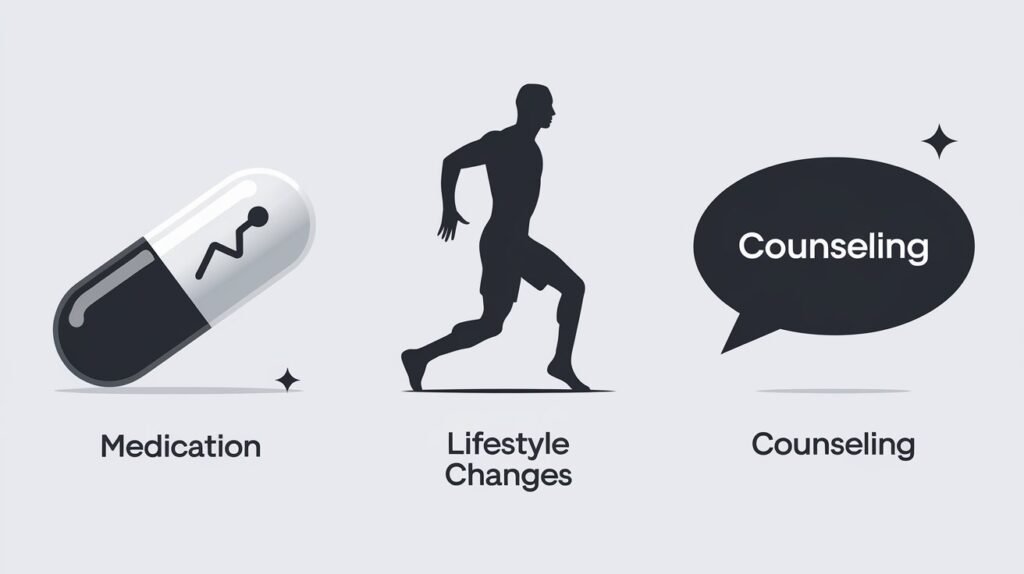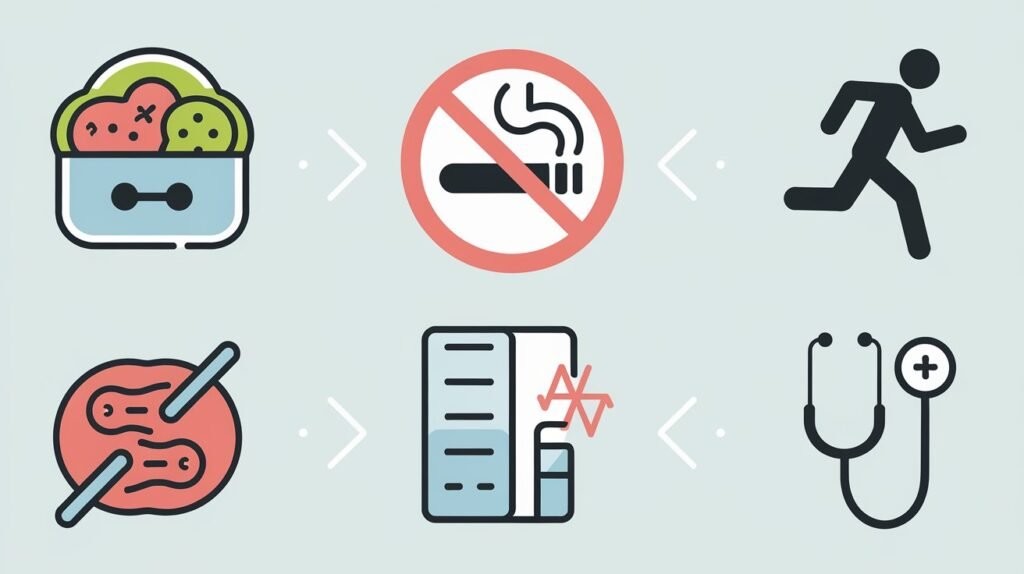Introduction
Erectile dysfunction (ED), often referred to as impotence, is a common condition affecting millions of men worldwide. It is characterized by the inability to achieve or maintain an erection sufficient for sexual intercourse. While ED can be distressing, it is a treatable condition with various solutions available. In this article, we will explore the causes, treatments, and prevention methods for erectile dysfunction, along with statistics and insights that highlight the impact of ED on men’s health and relationships.
Table of Contents
Understanding Erectile Dysfunction
Erectile dysfunction occurs when there is a problem in one or more systems that contribute to achieving an erection, which involves signals from the brain, adequate blood flow to the penis, healthy nerve function, and balanced hormone levels. ED can be situational or chronic, impacting a man’s self-esteem and quality of life.
Table 1: Erectile Dysfunction Causes and Prevalence by Age
| Age Group | Percentage of Men Affected |
|---|---|
| 20-29 Years | ~8% |
| 30-39 Years | ~12% |
| 40-49 Years | ~20% |
| 50-59 Years | ~30% |
| 60+ Years | ~50% |
These percentages indicate that ED becomes more common with age, but it can affect men at any stage of life.
Causes of Erectile Dysfunction

1. Physical Causes
- Cardiovascular Diseases: Conditions such as atherosclerosis (hardening of the arteries) restrict blood flow, which can prevent adequate blood from reaching the penis.
- Diabetes: High blood sugar levels over time can damage blood vessels and nerves that control erection.
- Obesity: Excess body weight can lead to hormonal changes that interfere with erectile function.
- Neurological Disorders: Conditions like multiple sclerosis, Parkinson’s disease, and spinal cord injuries can disrupt the nerve signals required for erections.
2. Psychological Causes
- Stress and Anxiety: High stress levels or performance anxiety can significantly impact sexual health.
- Depression: Depression often leads to a reduced libido and can interfere with sexual performance.
- Relationship Issues: Tension or unresolved issues in a relationship can lead to ED due to psychological stress.
3. Lifestyle Factors
- Smoking: Smoking damages blood vessels, impairing circulation and reducing blood flow to the penis.
- Alcohol Consumption: Excessive alcohol use affects the nervous system and can hinder erectile function.
- Poor Diet and Lack of Exercise: Unhealthy dietary habits and a sedentary lifestyle increase the risk of ED by contributing to obesity and cardiovascular issues.
Diagnosis of Erectile Dysfunction
Diagnosing ED typically begins with a physical examination and a detailed discussion of symptoms and medical history. Additional tests may include:
- Blood Tests: These assess hormone levels, blood sugar, and cholesterol, which can contribute to ED.
- Ultrasound: A Doppler ultrasound evaluates blood flow to the penis.
- Psychological Assessment: This may be used to explore any underlying mental health issues or psychological factors affecting sexual health.
Treatment Options for Erectile Dysfunction

1. Medications
- PDE5 Inhibitors: Drugs like Sildenafil (Viagra), Tadalafil (Cialis), and Vardenafil (Levitra) are commonly prescribed for ED. They increase blood flow to the penis, helping to achieve and sustain an erection.
- Hormone Therapy: Testosterone replacement therapy may be effective for men with low testosterone levels contributing to ED.
2. Lifestyle Changes
- Diet and Exercise: A balanced diet rich in fruits, vegetables, lean proteins, and whole grains, combined with regular exercise, can improve ED by enhancing cardiovascular health.
- Quitting Smoking and Alcohol Reduction: Smoking cessation and limiting alcohol can significantly improve blood flow and sexual health.
3. Counseling and Therapy
- Sex Therapy: Helps individuals and couples understand and work through sexual dysfunction, reducing anxiety and building intimacy.
- Cognitive-Behavioral Therapy (CBT): Addresses negative thought patterns related to ED and helps alleviate stress and anxiety.
4. Vacuum Erection Devices
- These devices use suction to draw blood into the penis, followed by a constriction ring at the base to maintain the erection. It is a non-invasive option suitable for men who may not benefit from medication.
5. Surgical Options
- Penile Implants: Surgical implants, either inflatable or malleable rods, can restore the ability to have an erection in severe cases where other treatments are ineffective.
Prevention of Erectile Dysfunction
1. Maintaining a Healthy Lifestyle
- Regular exercise, a balanced diet, and avoiding excessive alcohol intake can reduce the risk of ED.
2. Managing Chronic Conditions
- Properly managing health conditions like diabetes, hypertension, and cardiovascular diseases can help in preventing ED. Regular check-ups and adherence to treatment plans are essential.
3. Mental Health Care
- Reducing stress through meditation, yoga, and therapy, and addressing any signs of depression or anxiety can have positive effects on erectile function.
4. Regular Medical Screening
- Men should undergo regular health screenings to monitor blood pressure, cholesterol levels, and blood sugar, as early detection of health issues can prevent ED.

Statistics on Erectile Dysfunction
- Prevalence: Approximately 30 million men in the United States experience ED. Globally, the numbers are much higher, with around 322 million cases projected by 2025.
- Cost of ED: In the U.S. alone, the annual cost of treating ED is estimated to be over $4 billion, including direct costs for medical treatments and indirect costs related to decreased productivity and quality of life.
Table 2: Success Rates of Common ED Treatments
| Treatment | Success Rate | Comments |
|---|---|---|
| PDE5 Inhibitors | 70-80% | Effective for most men with ED |
| Vacuum Erection Devices | 80-90% | Non-invasive but may require adjustment |
| Penile Implants | 95% | Highly effective, often last-resort option |
Frequently Asked Questions about Erectile Dysfunction
1. What is erectile dysfunction (ED)?
Erectile dysfunction is the inability to achieve or maintain an erection firm enough for sexual intercourse. It’s a common condition that can affect men of all ages, especially as they get older, and can have physical, psychological, or lifestyle-related causes.
2. How common is erectile dysfunction?
ED is very common, especially among older men. Studies show that approximately 50% of men aged 40–70 experience some form of erectile dysfunction, and its prevalence increases with age.
3. What causes erectile dysfunction?
ED can be caused by physical factors (such as cardiovascular disease, diabetes, obesity, and hormonal imbalances), psychological factors (like stress, anxiety, and depression), or lifestyle habits (such as smoking, alcohol use, and lack of exercise).
4. Is erectile dysfunction a permanent condition?
Not necessarily. Many men can improve or even reverse ED with lifestyle changes, medication, or therapy, depending on the underlying cause. Consulting a healthcare provider can help determine the best course of action.
5. What treatments are available for erectile dysfunction?
Common treatments include medication (such as Viagra or Cialis), lifestyle changes (like diet and exercise), therapy for psychological factors, and devices like vacuum erection pumps. In severe cases, surgical options like penile implants may be considered.
6. Can lifestyle changes help with erectile dysfunction?
Yes, lifestyle changes such as regular exercise, a healthy diet, quitting smoking, and limiting alcohol can improve ED symptoms by enhancing overall health, blood flow, and hormone balance.
7. Are there any natural remedies for ED?
Some natural remedies, such as ginseng, L-arginine, and pomegranate juice, may help improve ED. However, their effectiveness varies, and it’s important to consult with a healthcare provider before trying these remedies, especially if taking other medications.
8. How does age affect erectile dysfunction?
As men age, they are more likely to experience ED due to natural declines in testosterone levels and increased risks for chronic health issues. However, ED is not an inevitable part of aging and can often be managed with appropriate treatment.
9. Can erectile dysfunction be a sign of other health problems?
Yes, ED can indicate underlying health issues such as heart disease, diabetes, or high blood pressure. ED may be an early warning sign for these conditions, making it important to seek medical evaluation.
10. When should I see a doctor for erectile dysfunction?
You should see a doctor if ED occurs regularly or is affecting your quality of life. A healthcare provider can help identify the underlying cause and recommend appropriate treatment.
11. Does stress cause erectile dysfunction?
Yes, stress can contribute to ED by impacting mental focus, reducing libido, and affecting the body’s physical response during arousal. Stress management and mental health support can be beneficial for those experiencing stress-related ED.
12. Can erectile dysfunction be prevented?
While not all cases can be prevented, maintaining a healthy lifestyle—such as exercising, eating a balanced diet, managing stress, and avoiding smoking and excessive alcohol—can lower the risk of developing ED.
Conclusion
Erectile dysfunction is a complex condition with numerous causes and a range of treatments that can significantly improve quality of life. While medications are effective for many men, lifestyle changes, psychological support, and alternative treatments are equally important components of ED management. Men experiencing symptoms should consult healthcare providers for a personalized treatment plan, as early intervention can prevent progression.
References
- American Urological Association (AUA) Guidelines on Erectile Dysfunction.
- NIH (National Institutes of Health) – “Erectile Dysfunction: Causes, Treatments, and Prevention”.
- Journal of Sexual Medicine – Various studies on the efficacy of PDE5 inhibitors and other ED treatments.
- Mayo Clinic – Erectile Dysfunction Diagnosis and Treatment.
- World Health Organization (WHO) – Global Estimates on Erectile Dysfunction Prevalence.




